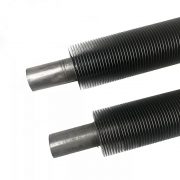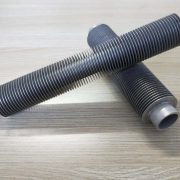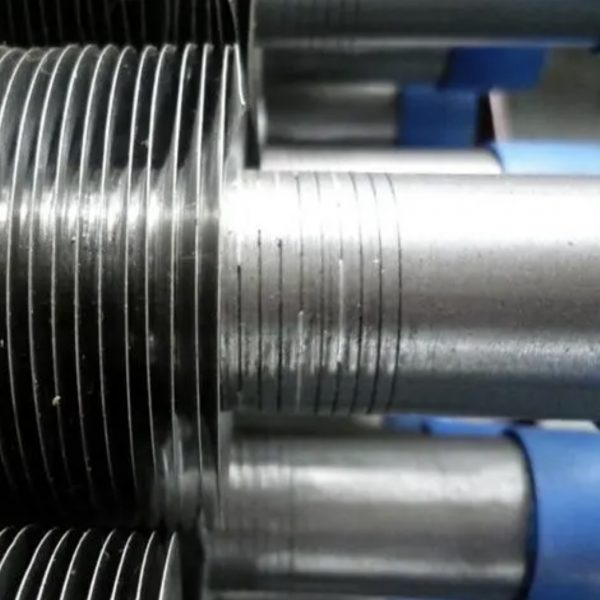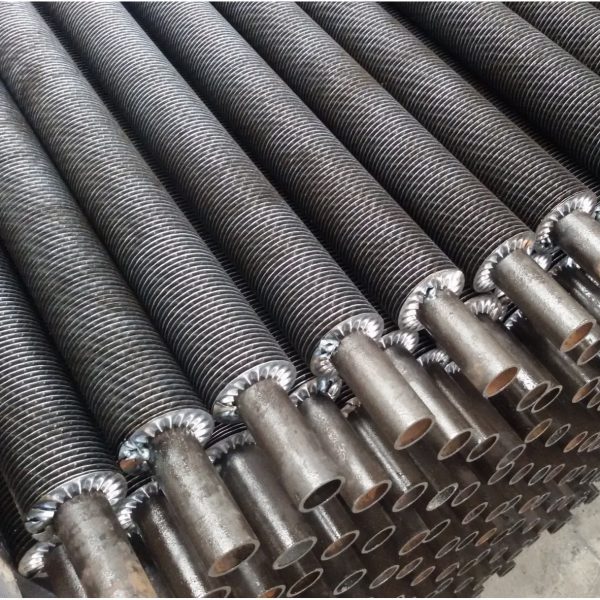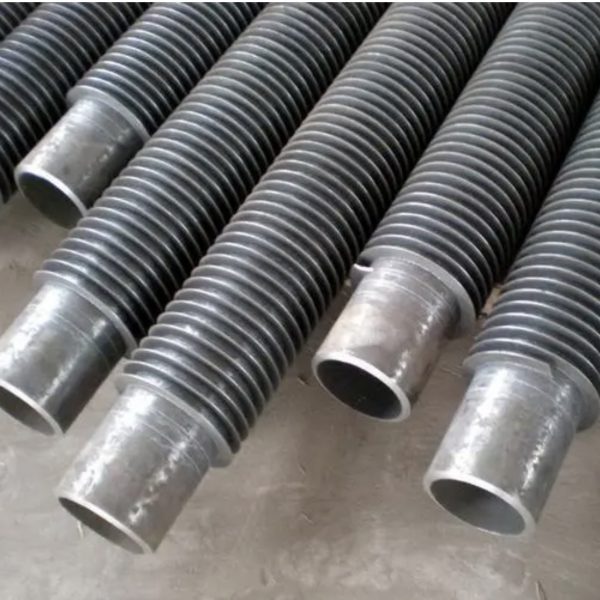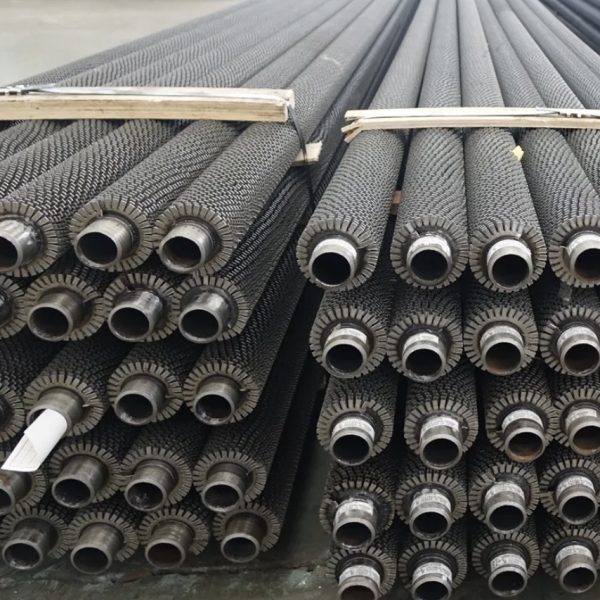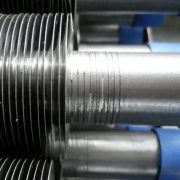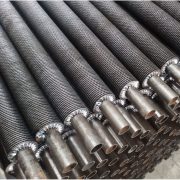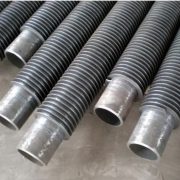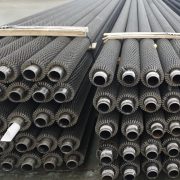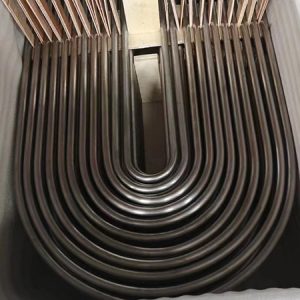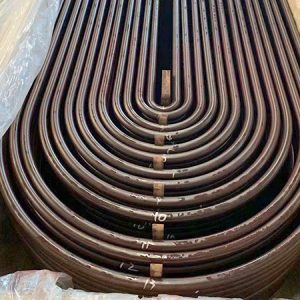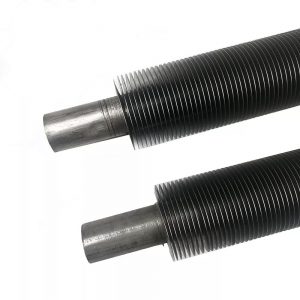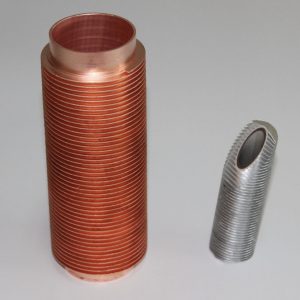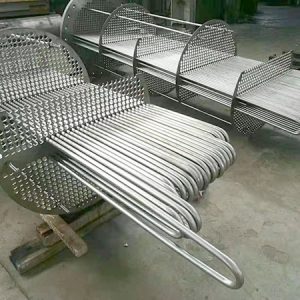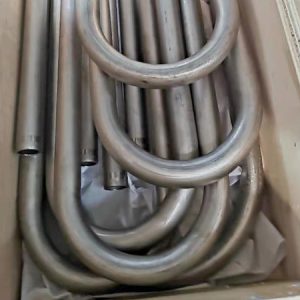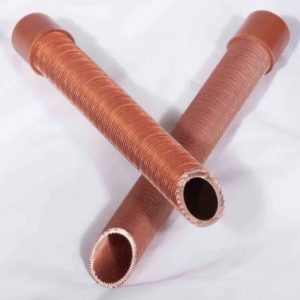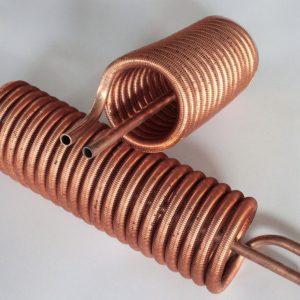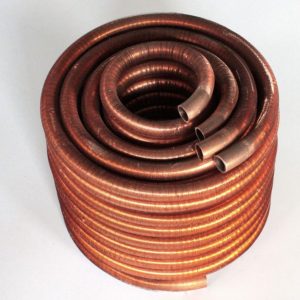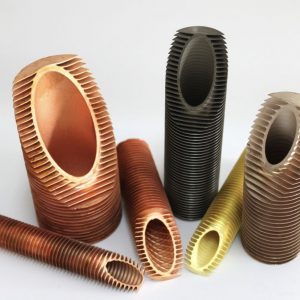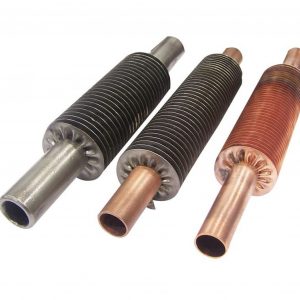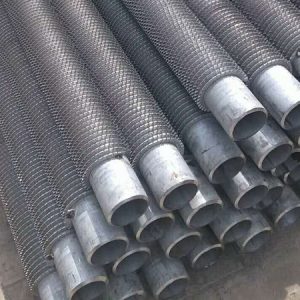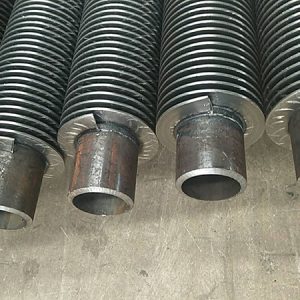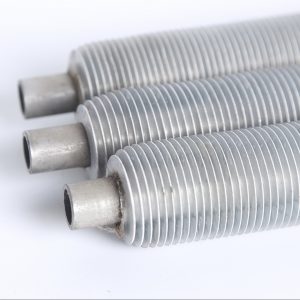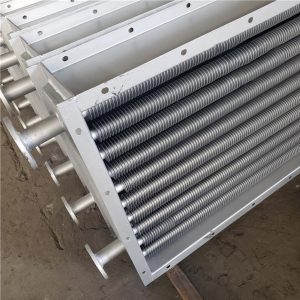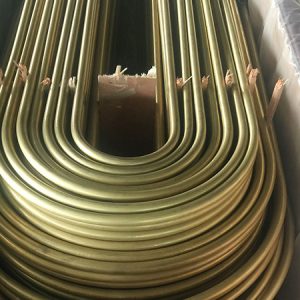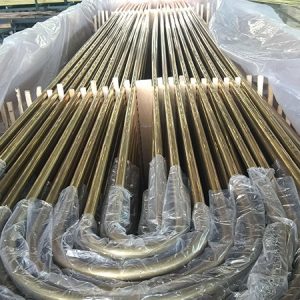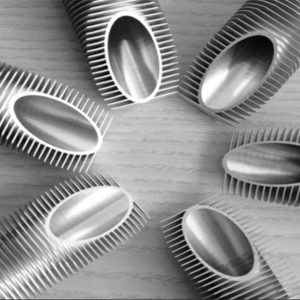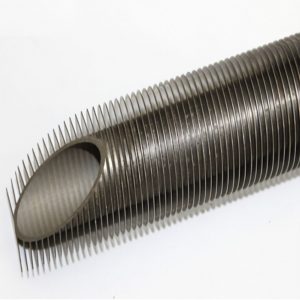Laser Fin rør
Laser svejsning finnet rør er en ny, Slidstærkt og effektivt varmevekslingsmateriale i finrørssvejseindustrien. Det er et højeffektivt og energibesparende varmevekslingselement med høj varmevekslingseffektivitet, stort varmeafledningsområde, lang levetid og temperaturtilpasning Det har en bred vifte, højt tryk, og er i overensstemmelse med de nationale emissionsstandarder for energibesparelse og miljøbeskyttelse. Det er meget udbredt i genvinding af spildvarme, petrokemisk industri, Kedler til kraftværker, økonomisatorer, Personbiler, Opvarmning af industri- og anlægsbygninger, kølesystemer og andre industrier.
Lasersvejsefinnerøret er en finrørslasersvejsemaskine, der integrerer laserteknologi, Hardware forme, og numerisk kontrol automatisk kontrol. Det er enkelt at betjene og fleksibelt og praktisk at fremstille. Overvinde en række problemer i svejseprocessen af lasersvejsning finned rør, såsom brud, langsom hastighed, dårlig formning, og rynker. Datang har nu med succes mestret svejsning af finnede rør såsom lasersvejsning af finnede rør og varmevekslere. Produktion og koordinering af alle parametre og automatiske armaturer.
- Beskrivelse: __________
- The advantages of finned tubes
- Product detail
- Undersøgelse
Laser welded finned tube is a commodity with excellent technology, which has irreplaceable advantages.
1. The thickness of the base tube can be 0.8-1.5mm, and the thickness of the plate-fin type can be 0.3-1mm. The relative processing technology greatly saves the material cost.
2. The penetration rate is large, which can avoid the corrosion of voids, increase the service life, and reduce the heat transfer coefficient.
3. Improve the limit of raw materials, and can use different raw materials for processing.
4. It is convenient for secondary processing, and the fan coil and elbow can be carried out immediately.
5. The heat-affected zone of electric welding is small, and the transformation of metallographic analysis is small, which makes it very possible to make small tubes processed by finned tubes.
Datang has 4 laser welding finned tube machines with a daily productivity of 2000 Meter.
Laser welding finned tube adopts laser welding process, which can weld light pipes and fins with thinner wall thickness, as well as denser fin pitches. Thinner light pipes and dense fins can improve heat exchange efficiency. Good penetration rate and not easy to be pulled off are the foundation of its good service life.
Laser welding finned tubes can realise welding between different metals, which can achieve good heat exchange efficiency for customers under different working conditions, and thinner wall thickness is also one of the ways to save costs.
Changzhou Grand has been committed to the development and research of monolithic laser welded finned tubes and single-layer and double-layer spiral coils. Now it has been applied in various fields such as boilers, chemicals, wall-hung boilers, Skibe, waste heat power generation, and home improvement. The surface is most used as a heating surface in the boiler industry. It is environmentally friendly and energy-saving. Laser welding finned tube is currently the most advanced product with irreplaceable advantages. The advantages of heat exchange waste heat in boilers and chemical industries have been fully utilized.
Our laser welding finned tubes have stable process and good price. It has provided support for the product innovation of various energy enterprises and provided opportunities for the development of enterprises. Laser-welded finned tubes have higher heat transfer performance and lower material costs than high-frequency welded finned tubes, and will become a market development trend.
The advantages of finned tubes
Transferring heat from a hot fluid into a colder fluid through a tube wall is the reason many of us use finned tubes. But you may ask, what is the major advantage of using a finned tube? Why can’t you just use a regular tube to make this transfer? Well you can but the rate will be much slower.
By not using a finned tube the outside surface area is not significantly greater than the inside surface area. Because of that, the fluid with the lowest heat transfer coefficient will dictate the overall heat transfer rate. When the heat transfer coefficient of the fluid inside the tube is several times larger than that of the fluid outside the tube the overall heat transfer rate can be greatly improved by increasing the outside surface area of the tube.
Finned tubes increase outside the surface area. By having a finned tube in place, it increases the overall heat transfer rate. This then decreases the total number of tubes required for a given application which then also reduces overall equipment size and can in the long-run decrease the cost of the project. In many application cases, one finned tube replaces six or more bare tubes at less than 1/3 the cost and 1/4 the volume.
For applications that involve the transfer of heat from a hot fluid to a colder fluid through a tube wall, fin tubes are used. Usually, for an air heat exchanger, where one of the fluids is air or some other gas, the air side heat transfer coefficient will be much lower, so additional heat transfer surface area or a fin tube exchanger is very useful. The overall pattern flow of a finned tube exchanger is often crossflow, dog, it can also be parallel flow or counterflow.
Fins are used to increase the effective surface area of heat exchanger tubing. Desuden, finned tubes are used when the heat transfer coefficient on the outside of the tubes is appreciably lower than that on the inside. Med andre ord, heat transferred from liquid to gas, vapor to gas, such as steam to air heat exchanger, and thermic fluid to air heat exchanger.
The rate at which such heat transfer can occur depends on three factors – [1] the temperature difference between the two fluids; [2] the heat transfer coefficient between each of the fluids and the tube wall; og [3] the surface area to which each fluid is exposed.
Finned tubes are used because they help:
Increase Heat Transfer Rate:
A finned tube exchanger typically has tubes with fins attached to the outside. Usually, there will be some liquid flowing through the inside of the tubes and air or some other gas flowing outside the tubes, where the additional heat transfer surface area due to the finned tube increases the heat transfer rate. In a crossflow fin tube exchanger, the fins will typically be radial fins and they’ll either be circular or square in shape.
Improve Heat Transfer Coefficient:
By not using a finned tube, the outside surface area is not significantly greater than the inside surface area. På grund af dette, the fluid with the lowest heat transfer coefficient will dictate the overall heat transfer rate. When the heat transfer coefficient of the fluid inside the tube is several times larger than that of the fluid outside the tube, the overall heat transfer rate can be greatly improved by increasing the outside surface area of the tube.
Increase Outside Surface Area:
By having a finned tube in place, it increases the overall heat transfer rate. Finned tubes increase the outside surface area. This decreases the total number of tubes required for a given application which then also reduces overall equipment size and can in the long-run decrease the cost of the project.
Finned tube heat exchangers are used in a variety of applications, and more so as industrial heat exchangers. An air heat exchanger like the evaporator coil in an air conditioning unit is typically a fin tube exchanger. Another common fin tube air heat exchanger is the car radiator. The purpose of the car radiator is to cool the hot water in the tubes with the air passing through the crossflow. On the contrary, the air conditioner evaporator coil has the purpose of cooling the air passing through it. The finned tubes that are manufactured at Kainon Boilers, use high grade carbon steel, rustfrit stål, kobber, brass, and aluminum. Our finned tube exchangers are designed to meet the specific duty condition, temperature and pressure of the fluids
Reference til finnerør
Finner af kulstofstål fås på kulstof, rustfrit stål, eller kobberrør. Ring venligst for en bestemt størrelse, hvis den ikke er angivet

| Slags | Beskrivelse: __________ | Underrør O.D. (Mm) |
Fin specifikation (Mm) | ||
|---|---|---|---|---|---|
| Finneplads | Finnehøjde | Fin tyk | |||
| Integreret | G-type finne tueb | 16-63 | 2.1-5 | <17 | ~0.4 |
| Ekstruderet | Enkelt metal kombineret metal | 8-51 | 1.6-10 | <17 | 0.2-0.4 |
| Lavt finnerør t-type finnerør | 10-38 | 0.6-2 | <1.6 | ~0.3 | |
| Bambusrør bølgepap | 16-51 | 8-30 | <2.5 | / | |
| Sår | L/KL/LL TYPE FINNERØR | 16-63 | 2.1-5 | <17 | ~0.4 |
| Streng | Strengfinnerør | 25-38 | 2.1-3.5 | <20 | 0.2-0.5 |
| U-type | U-type rør | 16-38 | / | / | / |
| Svejsning | HF-svejsefinnerør | 16-219 | 3-25 | 5-30 | 0.8-3 |
| Finnrør af H/HH-typen | 25-63 | 8-30 | <200 | 1.5-3.5 | |
| Piget finnerør | 25-219 | 8-30 | 5-35 | φ5-20 | |
I henhold til brugernes behov, Vi kan producere alle former for stålbånd vikling finned rør og stål aluminium komposit finned rør.
Materialer
Finner af kulstofstål fås på kulstof, rustfrit stål, eller kobberrør. Ring venligst for en bestemt størrelse, hvis den ikke er angivet

Vi tilbyder dig en bred portefølje af materialer og kan til enhver tid udvide vores sortiment for at imødekomme dine specifikke behov vedrørende varmeledningsevne, mekaniske egenskaber, eller korrosionsbestandighed.
- Underrør: Kulstofstål, Rustfrit stål, Kobber, Cupro nikkel, Aluminium, Legeret stål
- Finne: Kulstofstål, Rustfrit stål, Kobber, Aluminium
- Ringe: Kulstofstål, Aluminium, Varmgalvanisering

